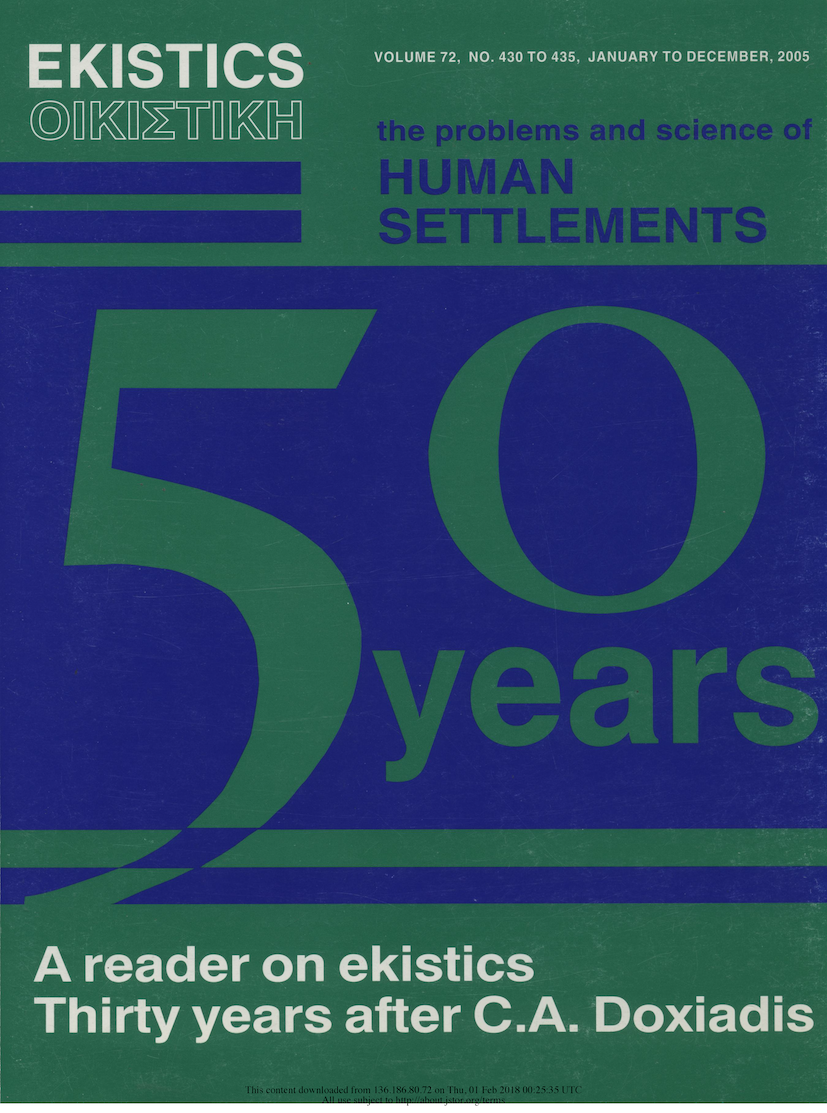Ecumenopolis: The coming world-city
DOI:
https://doi.org/10.53910/26531313-E200572430-435171Keywords:
CitiesAbstract
Man has been living for thousands of years either in villages or in small static cities. Cities were always static; the symbol of their static nature was the wall. Walls did not exist merely in physical form; they were the most symbolic feature of the city for thousands of years. This can be understood by the fact that where there was no necessity for walls, for example, in the Spanish colonial cities which were created on the basis of well-conceived plans, the city walls which had so strongly influenced man were replaced by wide, well-planted avenues which did not present any hindrance to invaders, but nonetheless provided the inhabitants with those city limits which their predecessors had maintained for thousands of years. It can be argued that several cities in the past were not static at all. Athens, for instance, underwent an important expansion under the Emperor Hadrian, and Constantinople moved its walls under the Emperor Justinian in in order to cover a wider area.
Downloads
Published
How to Cite
Issue
Section
License
Please contact the Editor-in-Chief: editor@ekisticsjournal.org, should you have any questions on copyright for your submission.
This research journal is for Educational and Knowledge development purposes.
All material published on this site complies with our copyright and terms as described by the Attribution-NonCommercial-NoDerivaties 4.0 International (CC BY-NC-ND 4.0)






